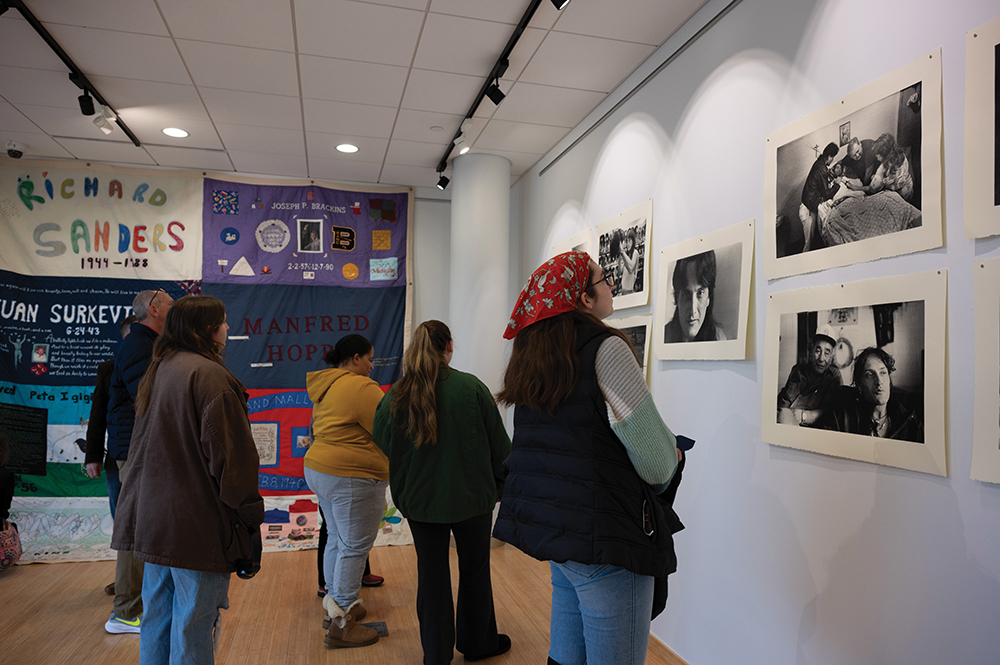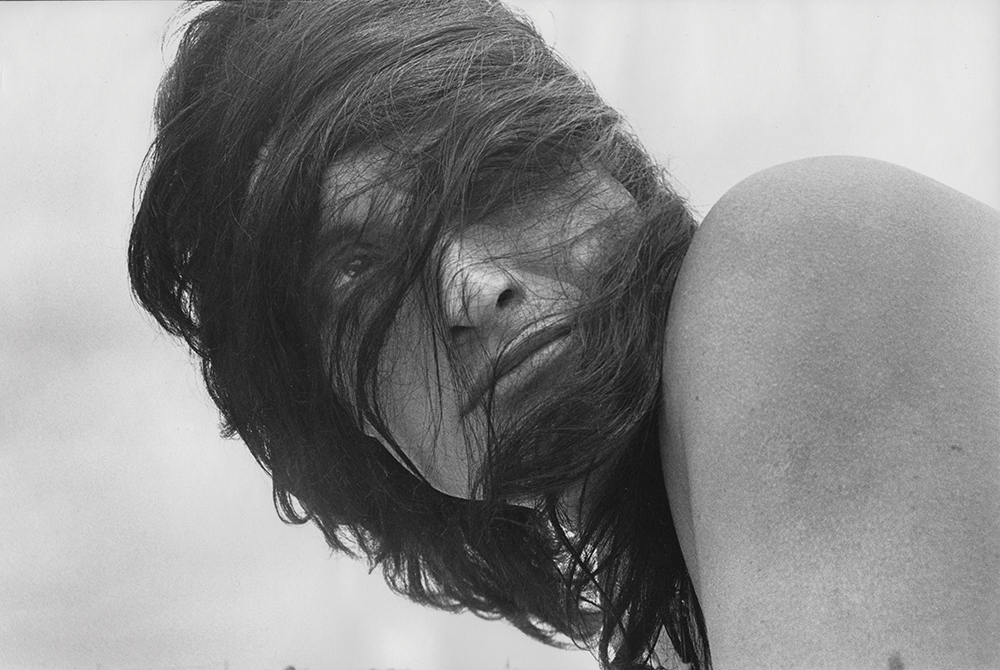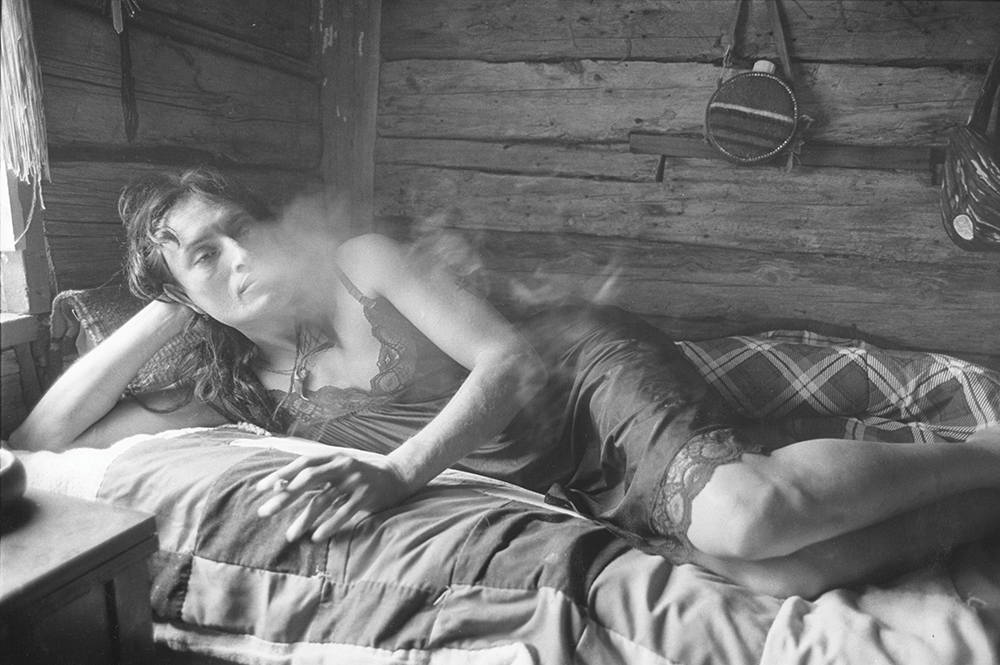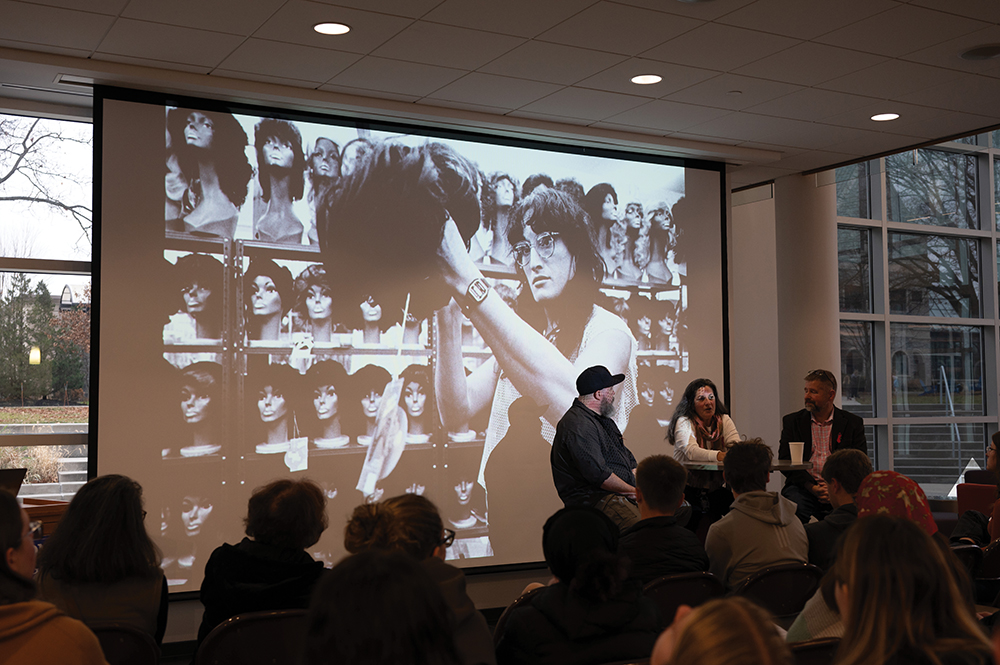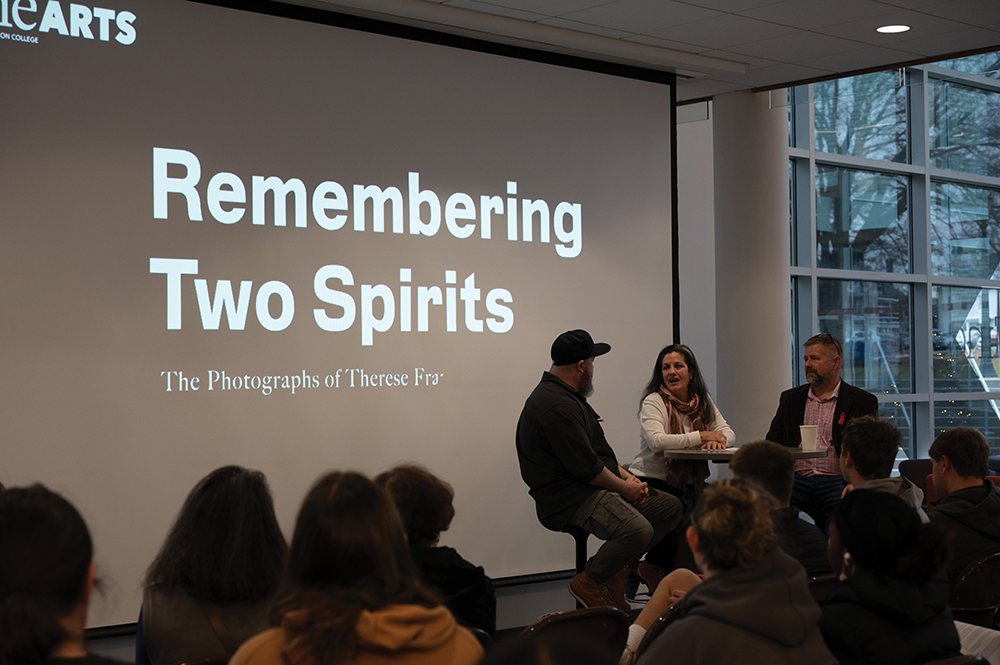How It Can Educate, Inspire, and Heal
By Deanna Thompson
During spring break last year, assistant professor Adam DelMarcelle and his family hit the highway. But their destination, an eight-hour drive away, was not the stuff of most people’s vacation dreams. They headed to a former hospice home in Columbus, Ohio, where AIDS patients were cared for in the 1990s. Once there, Adam retrieved a shovel from his car. He dug into the earth in the front yard and scooped the dirt into a Mason jar.
Months later, that dirt, mixed with a black base, became the ink that visitors see in the screen prints that make up “Remembering Two Spirits: The Photos of Therese Frare,” the current exhibition in the Cooley Gallery on Wilson College’s campus. The Mason jar, with a few leftover bits of dirt, is also part of the display, joining the screen prints in providing a deeper connection to the AIDS patients pictured, both for the people viewing the art and for the artist who turned the dirt into ink.
Art, DelMarcelle says, creates the opportunity for powerful dialogue.
“The artist’s job is to make something that’s truthful, to throw a rock into the water, and then the ripples travel away and hit touch points, continuing to move forward,” DelMarcelle said.
The ripples from a piece of art can take a myriad of forms: educating, informing, inspiring questions, and serving as a jumping off point for viewers and artists alike to process difcult emotions. And sometimes, the making of art hits a touch point that can lead to solace and healing.
“For me,” DelMarcelle said, “the act of making the work is therapeutic.”
Arts activism: Beyond ‘pictures on a wall’
Almost 10 years ago, DelMarcelle’s brother Joey died at age 33 of an opioid overdose. Out of the shock and pain of dealing with that, DelMarcelle emerged with a mission: using his art to amplify the opioid crisis and the pain it has caused for millions of people.
“I’m an activist artist that makes work about the overdose epidemic,” he said. “I’m going to do that for the rest of my life. That’s going to be my subject matter in multiple forms.”
He began with projection displays in his hometown of Lebanon, Pa., and moved on to the development of art – often screen prints – that has been displayed internationally. His goal is to raise awareness of the opioid epidemic, to call out those who have played a part in its rise, to honor his brother, and he hopes, to inspire change.
He made ink from some of his brother’s ashes and sent it to artists around the world to create their own works. When he has exhibitions, he has rules on what the gallery must do in concert with the display to educate the public on the topic of opioid addiction and overdoses.
“It’s really as much social work as it is art,” DelMarcelle said. “If museums want to have my work, they can only have it if they agree to do heavy community outreach around my work being there. The first time my prints were shown in a museum, I told them they could only have it if they built an active harm reduction space in the gallery while my work was on display. So that means they had to have local harm reduction workers from that community in the gallery, teaching people who come in about needle exchange and wound care and recovery, and meeting people where they are with compassion, whether or not they use drugs. So, it was a way to be able to make it an activated space beyond just pictures on a wall.”
In the Frare exhibition, he sees a strong connection to his own work. Since the COVID pandemic, places where the HIV/AIDS epidemic had lessened have seen a surge in cases – related in part to increases in opioid use.
“This subject matter of HIV/AIDS is hyper-relevant to my subject matter,” DelMarcelle said. “In places like the Kensington neighborhood of Philadelphia, HIV/AIDS is up 400% from last year, and that’s because intravenous drug use. So, one epidemic is feeding the other.”
The job of art
While not all artists are activists, most believe the value of art goes beyond simply creating a thing of beauty. Artists tell the story of human life – and help the rest of us process and understand it.
Joshua Legg, associate professor of interdisciplinary practice at Wilson, is an interdisciplinary artist – a painter, poet, choreographer, theatre director and performer who has “used a variety of media to engage people in conversation and to share stories for almost 35 years.”
He notes that art is one of the key ways that humanity, from the beginning of civilization, has examined the world around us.
“When you get down to brass tacks, movement, or dance, is our first language,” Legg said. “We have always as human beings processed and analyzed what was going on around us through some art form. So, it is absolutely essential to human beings’ understanding of ourselves as individuals and our place in the world. And the times when we have pretended as though we could do away with the arts are those times when communication has broken down. Why has communication broken down? That happens because we have lost a critical lens and a way of processing. The ability to engage in the world and to explore, to seek understanding, and to then communicate what we see and understand is absolutely necessary for the maker and for the viewer.”
Art is not designed to provide answers, but rather to encourage those who see it to ask questions, DelMarcelle said.
“That’s what artists are supposed to do,” he said. “It’s not about giving answers to things. It’s about giving an opportunity for another person to ask a question. I think on a decent day, it might be: What is this thing? On a good day, they might want to find out one more thing about that subject matter. On the best day, they walk away asking a question of themselves: What part of the landscape of this issue am I responsible for? And what can I now do about it?”
The iconic photo that Frare took of Kirby as he lay dying is a poignant example of how art can educate, inspire action, and sometimes provide healing. Before her photo was published, there were few images of the suffering of victims of the virus. Frare’s photo helped change the world’s view of HIV/AIDS patients, bringing their humanity home in ways that hadn’t been possible.
“You can’t look at that picture and hate a person with AIDS. You just can’t,” Barb Cordle, the volunteer director at the hospice where Kirby died, is quoted as saying in a 2014 LIFE retrospective about the photo.
Similar to the process DelMarcelle described, people reacted to the photo first with a recognition that AIDS patients were human beings like them, with some moving on to learn more about AIDS, and others ultimately examining what could be done to make life better for those suffering with HIV/AIDS.
While Frare sees all art as a powerful tool, she notes the draw of photography and video and points out how that power is being used today in social media communication. “Information from photos happens in an instant. You see it, you get it. They’ve figured it out. We can use pictures to communicate quickly.”
Her images of Peta in the Wilson exhibition bring home the early 1990s world for an AIDS patient, but also highlight the fluidity of Peta in terms of gender, identity, and status as patient or caregiver. Seeing that duality can be cathartic for those who also feel as if they straddle a variety of lines.
Ryan Reinhardt, a junior art and sociology major at Wilson who attended a class where Frare spoke as well as the panel discussion and exhibition, felt a strong connection to Peta’s story and found Frare’s images of Peta to be emotionally compelling.
“The stories that she is telling through her work are very eye-opening, and it was relatable for me as a person because I think I have a commonality in the fluidity that she depicted,” Reinhardt said. “I had a very intense emotional reaction, just to see this person living their life in a very fluid manner in a very truthful and honest manner, and embracing who they are, even though they struggle with AIDS or with not being accepted into certain communities.”
Art like this, Reinhardt believes, can encourage people to see beyond their own lives and perhaps be more accepting of others’ way of living.
“Art plays a role in speaking to something larger and also getting people to think about things in a different way,” Reinhardt said. “Because I think, especially with work like Therese Frare’s exhibit, it puts a different way of living into the world, which you have to then live with. So, I think it makes people more adaptable in some ways.”
The value of art for other disciplines
Another way that art can bring about change is by helping nonartists working in other disciplines view their work through a different lens. A number of pieces of DelMarcelle’s work on the opioid epidemic are housed in a collection at Yale University’s Cushing Whitney Medical Library.
“That collection, which is a huge art collection, is used for one reason, and that is to educate doctors on the humanity of the people they’re going to be serving,” DelMarcelle said. “So, they bring future doctors in, and they will pull out my work about the overdose epidemic [and others’ work in different areas] and they will have conversations about the actual humans they’re going to be serving, not this idea of them. So, that’s really important.”
During Frare’s visit to campus, DelMarcelle made a point of having her speak not just to art classes, but to a sociology class as well.
“It’s a really important goal of mine as an educator, especially as an artist, that we have to use what we’re doing to attach to all interest areas on our campus, meaning art is relevant to all of these areas, and we need to figure out ways to bridge the gap to show why it’s important for sociologists to be looking at art, why it’s important for medical students to consider art,” DelMarcelle said.
“One of my hopes with the shows that we’re bringing on campus now, and the community engagement we’re trying to bring around them, is that the professors on this campus see the value of bringing their students [to the exhibitions], even if they think the subject matter has no application to their major,” DelMarcelle said. “Because I’m here to tell them: It absolutely does. The artist’s job is about documenting what it means to be alive. That’s all of us.”

